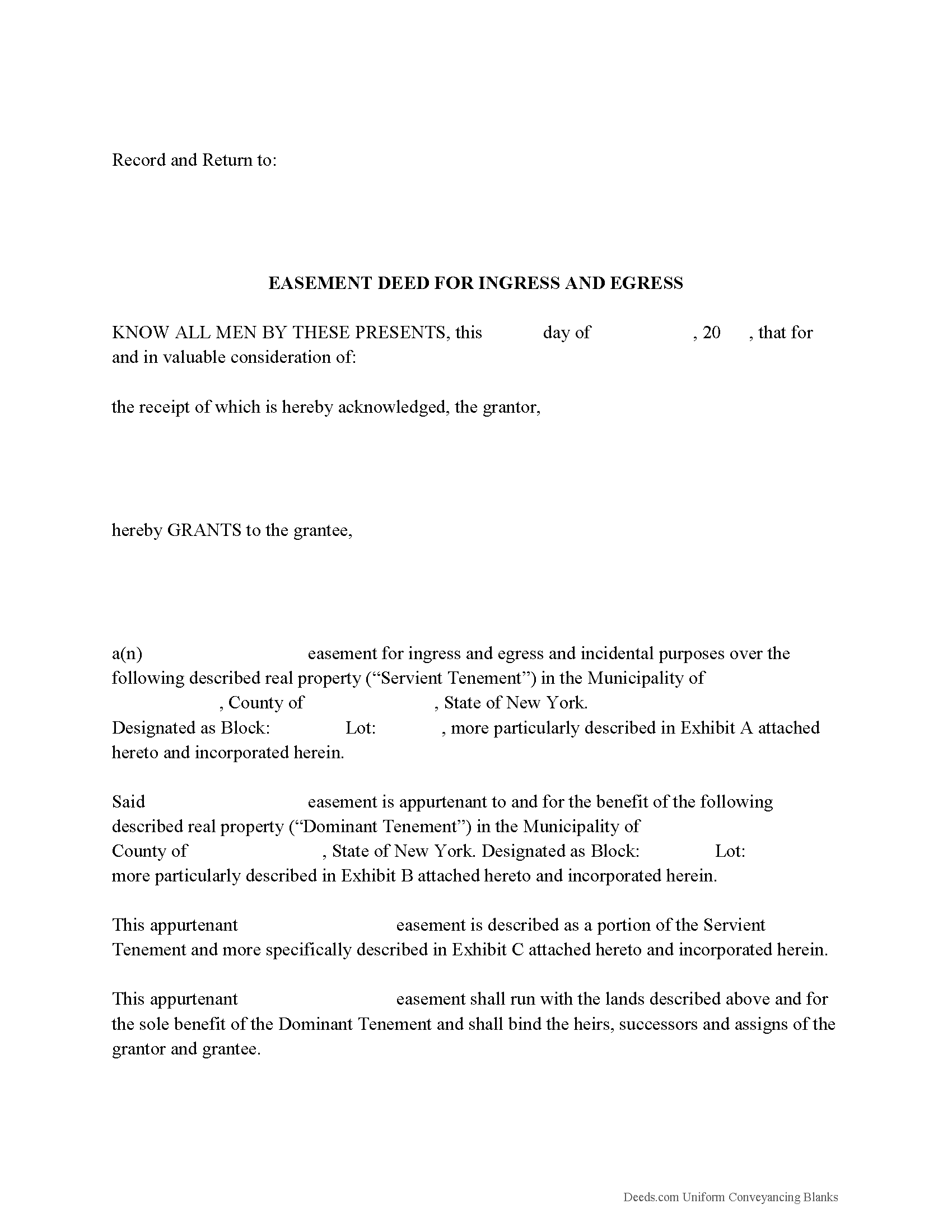Download New York Easement Deed Legal Forms

New York Easement Deed Overview

An easement allows one person to use another person's property for a specific purpose. In New York, easements are created for many different reasons. The easement deed is the specific instrument that creates this right. An easement can be either appurtenant or in gross. An appurtenant easement benefits the dominant estate and runs with the land, while an easement in gross benefits an individual or a legal entity. An express easement is an interest in real property that is created by deed, contract, or other instrument in writing.
When obtaining an easement for the purpose of exposure of a solar energy device, the instrument should be created in writing and will be subject to the same conveyancing and recording requirements as other easements in this state ( 335-b).
As an interest in real property, an easement deed must be signed and acknowledged by the grantor, and certified according to law. Acknowledgments must be made by the grantor (292). If acknowledged within the state of New York, an easement deed can be acknowledged before a justice of the Supreme Court, an official examiner of title, or a notary public. Acknowledgments can also be made before any of the officers listed in 298, but these officers must be operating within their own jurisdiction. Out-of-state acknowledgments are valid in New York if the easement deed has been acknowledged according to the laws of such place and if it is accompanied by a certificate stating such fact (299-a).
In order to provide constructive notice, an easement deed must be properly recorded in the county where the property subject to the easement is located. If the deed is not duly signed, acknowledged, certified, and recorded, it will be void against a subsequent purchaser or one who acquires by exchange the same real property or any portion of it, in good faith and for a valuable consideration, from the same vendor whose conveyance is first duly recorded ( 291).
(New York ED Package includes form, guidelines, and completed example)